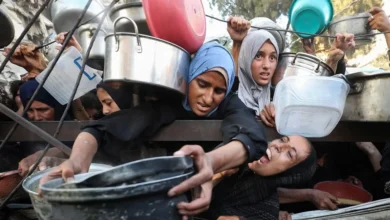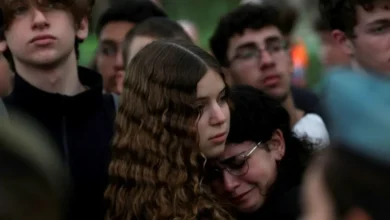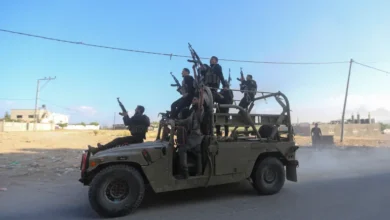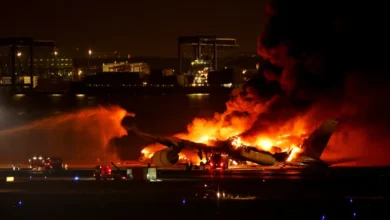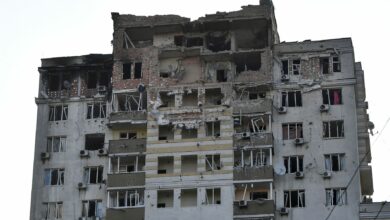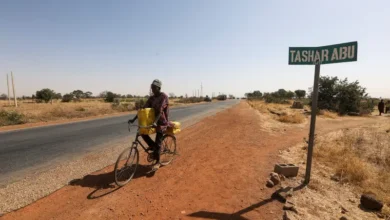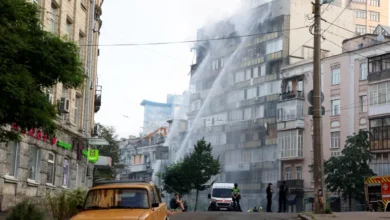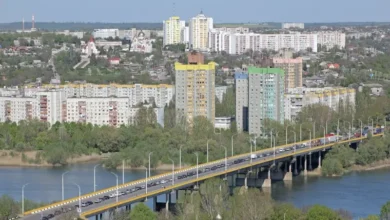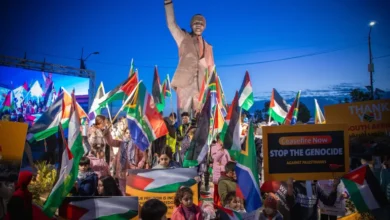Mapping one year of cross-border attacks between Israel and Lebanon

The Israeli army continues to pound locations across Lebanon, including strikes on Nabatieh, a major city in the south.
Israeli Prime Minister Benjamin Netanyahu has threatened Lebanon with “destruction like Gaza”, deploying more troops to Lebanon and ordering people in its south and parts of the capital Beirut’s southern suburbs, to evacuate.
Lebanon’s Ministry of Public Health said Israel has killed at least 2,255 people and wounded more than 10,000 after a year of fighting between Hezbollah and Israeli forces.
In addition, Lebanese authorities say, more than 1.2 million people have been displaced.
Destruction of Lebanese towns
Israeli attacks have severely damaged several villages in south Lebanon and neighbourhoods in Beirut.The Lebanese village of Yaroun – roughly 1km (0.6 miles) from the Blue Line, the de facto border between Israel and Lebanon – has been devastated by Israeli attacks.
Satellite imagery obtained by Al Jazeera’s verification unit Sanad shows levelled homes and cratered ground following Israel’s ground invasion into Lebanon which began on October 1.
One year of cross-border attacks
The exchange of attacks between Israel and Hezbollah has been going on since October 8, 2023, when Hezbollah first launched attacks on Israel in solidarity with the Palestinians trapped in the Gaza Strip as Israel waged war on the enclave.
Israel has launched more than four times as many attacks on Lebanon as Hezbollah has on Israel, tallying at least 9,891 attacks.
Hezbollah, which was formed in 1982 to fight Israel’s invasion and occupation of southern Lebanon, says it will stop attacking Israel if its assault on Gaza stops.
Regarded as the most battle-hardened nongovernmental fighting group in the region, Hezbollah fought a 34-day war against Israel in 2006 that was widely seen as a strategic and military failure for Israel.
Some Israeli leaders have pledged to remove Hezbollah from southern Lebanon, even by force.
According to the Armed Conflict Location and Event Data (ACLED), at least 12,054 attacks were exchanged between Israel and Hezbollah and other armed groups in Lebanon from October 7, 2023 to October 4, 2024.
About 82 percent of these attacks – 9,891 – were carried out by Israel, which killed at least 1,562 people in Lebanon.
In addition to Hezbollah – which mostly bore the brunt of the hostilities – other parties involved in attacks against Israel include Lebanese al-Fajr Forces and Amal Movement as well as Hamas’s Qassam Brigades and Palestinian Islamic Jihad’s al-Quds Brigades, both armed wings of Palestinian groups with a presence in Lebanon.
Within two weeks, from September 20 to October 4, there have been almost 2,000 attacks between Israel and Lebanon. This accounts for a sixth of the total attacks since October 8, 2023.
- Naqoura – 321 attacks
- Hula – 303 attacks
- Khiam – 269 attacks
Groups from Lebanon attacked these locations in northern Israel the most:
- Kiryat Shmona – 177 attacks
- Metula – 116 attacks
- Margaliyot – 104 attacks
- Al-Manara – 95 attacks
- Shtula – 84 attacks
Israel’s arsenal
Israel holds the most advanced missiles in the Middle East.
It makes many of them itself, but gets most of its precision-guided missiles from the United States.
Much of Israel’s capabilities are short-range tactical systems, including the Popeye, Extra and Gabriel missiles. Among its long-range missiles are Jericho 2 and Jericho 3 ballistic missiles with ranges of 1,500-3,500km (930-2,175 miles) and 4,800-6,500km (3,000-4,000 miles), respectively, according to the Center for Strategic and International Studies (CSIS).
Also, despite not officially acknowledging it, Israel is believed to possess at least 90 nuclear weapons.
